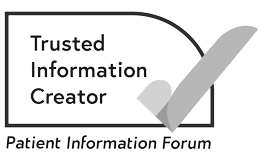Controlling symptoms of lung cancer
Lung cancer can cause symptoms like breathlessness, a cough, pain, or conditions such as blocked airways, superior vena cava obstruction (SVCO) or pleural effusion. There are different ways these can be treated.
About controlling symptoms of lung cancer
You may have symptoms of lung cancer, such as breathlessness or a cough. Some people may develop new symptoms during their illness. Treatments for lung cancer help to reduce symptoms. There are also other ways to manage and control symptoms.
You may be referred to a doctor or nurse who is an expert in symptom control. They are sometimes called palliative care specialists.
Breathlessness
Breathlessness is a common symptom in people with lung cancer. It can be distressing to deal with. It may take a while for treatments to improve your breathing.
Your cancer team will explain if there are suitable treatments to help treat blocked airways or if oxygen therapy would be useful.
Different drugs can help ease breathlessness. You may have 1 of the following:
- Bronchodilator drugs to widen your airways. You have these through an inhaler or a device called a nebuliser. This turns a liquid containing the drugs into a fine mist you breathe into your lungs. You breathe the drug in through a face mask which is connected by a tube to the nebuliser.
- Steroids to reduce inflammation in your lung
- Diuretics tablets to help you pass more urine (pee).
- Small doses of morphine.
- Drugs that reduce anxiety.
There are things you can do to help manage breathlessness. It is important to pace yourself. Save your energy for the things you need to do or that are important to you.
Coughing
If you have a cough, there are different treatments that can help. Some types of painkiller tablets, such as codeine or morphine, can help suppress a cough. You can have other drugs as a vapour that you inhale. A saline mixture given through a nebuliser may help loosen phlegm.
Sometimes a short course of radiotherapy may help improve a cough.
Pain
Tell your doctor or nurse if you have pain. There are different ways to control it. Treating the cancer can often improve pain. Your doctor will prescribe painkillers to take regularly.
You can take most painkillers by mouth, but they can also be given as a patch on the skin or as an injection. There are different types of painkiller and they can be given in different ways.
Bone problems
If lung cancer has spread to your bones it is called secondary bone cancer. It may cause different problems, including pain.
To reduce the risk of bone problems, your doctor may prescribe a drug called denosumab. You have it as an injection under the skin. Another possible drug your doctor may prescribe is zoledronic acid. It is given as a drip.
You may be given 1 or sometimes a few sessions of radiotherapy to treat bone pain. Sometimes surgery may be used to strengthen a weakened bone.
We have more information about the symptoms of secondary bone cancer.
Spinal cord compression
Secondary cancer in the bones of the spine can put pressure on the nerves of the spinal cord. This is called metastatic spinal cord compression (MSCC). If you have symptoms of MSCC, contact your hospital team immediately as you may need urgent treatment.
Treating other lung conditions
Lung cancer may cause conditions that cause breathlessness and other symptoms. Cancer treatments can help improve these, but there are other ways they can be treated. Your doctor or nurse will give you more information about them.
Pleural effusion
Cancer in the lung can cause fluid to build up between the layers that cover the lung (the pleura). This is called a pleural effusion.
To treat a pleural effusion, the fluid is slowly drained. You may have this treatment as an outpatient, or you may need to stay in hospital for a couple of days. It may be possible for your doctor to seal the layers of the pleura together. This is called pleurodesis.
Sometimes a pleural effusion comes back, and you may need to have the fluid drained again. Some people may have a pleural catheter (tube) inserted so they can drain off more fluid at home.
Superior vena cava obstruction (SVCO)
The superior vena cava (SVC) is a vein in the middle of the chest. It carries blood from the upper body to the heart. If lung cancer presses on the SVC, it may block the flow of blood along this vein. This is called superior vena cava obstruction (SVCO).
The symptoms can be distressing, but they can usually be quickly controlled. SVCO needs to be treated quickly.
Treating blocked or narrowed airways
When the cancer is causing a blockage or narrowing in the airways, doctors may use the following treatments to relieve symptoms. Sometimes more than 1 treatment can be used. You might also have a treatment again if you need it.
You usually have the treatment under a general anaesthetic using a bronchoscope. A bronchoscope is a thin, flexible tube that a doctor or nurse uses to look inside your airways and lungs. The tube has a tiny camera on the end. The camera shows a picture of the area on a screen.
The choice of treatment will depend on the size of the tumour and where it is in the airway. Your cancer team will explain the possible benefits and risks of these treatments to you. They will give you information about the procedure and any preparation you need.
-
Cryosurgery
Cryosurgery (cryotherapy) uses extreme cold to freeze and destroy cancer cells. It is usually used if the tumour grows into the main lung airways and makes them narrow. This is not common, but if it happens you may become breathless.
The doctor uses a thin, flexible tube with a rounded end called a probe that is passed down the bronchoscope. They use liquid nitrogen to freeze the end of the probe. The probe is placed directly onto the tumour. This freezes and destroys the cancer cells. This reduces the size of the tumour in the airway and makes breathing easier. -
Diathermy or electrocautery
These treatments use an electrical current that produces heat to destroy cancer cells.
Your doctor uses a bronchoscope to guide a probe into your windpipe. They pass an electrical current through the probe to the tumour to destroy the cancer cells. This will make breathing easier. -
Laser therapy
Doctors can use laser therapy to shrink the cancer and prevent it from blocking the airways.
You usually have laser therapy under a general anaesthetic. This means you are not awake for the treatment. The doctor uses a bronchoscope to aim the laser beam at the tumour. The laser beam uses heat to destroy as much of the tumour as possible.
Another laser treatment called photodynamic therapy (PDT) is sometimes used to treat blocked airways. -
Stents to open the airway
If the cancer presses on the airway, the airway can become narrow. A small tube called a stent can be used to open the airway to help you breathe more easily. You may need a general anaesthetic to have a stent put in.
The doctor puts the stent inside the airway using a bronchoscope. The stent is folded flat when it is first inserted. As it comes out of the bronchoscope, the stent opens up like an umbrella. This pushes the walls of the narrowed airway open and makes your breathing easier. It can stay in your lung permanently.
About our information
This information has been written, revised and edited by Macmillan Cancer Support’s Cancer Information Development team. It has been reviewed by expert medical and health professionals and people living with cancer.
-
References
Below is a sample of the sources used in our lung cancer information. If you would like more information about the sources we use, please contact us at informationproductionteam@macmillan.org.uk
National Institute for Health and Care Excellence (NICE). Lung cancer – Diagnosis and management. Clinical guideline 2019. Last updated 2023. (accessed Nov 2023) Available at: https://www.nice.org.uk/guidance/ng122
European Society for Medical Oncology (ESMO). Small-cell lung cancer: ESMO clinical practice guidelines for diagnosis, treatment and follow-up. 2021. (accessed Nov 2023). Available at: https://www.esmo.org/guidelines/guidelines-by-topic/esmo-clinical-practice-guidelines-lung-and-chest-tumours/small-cell-lung-cancer
European Society for Medical Oncology (ESMO). Early and locally advanced non-small-cell lung cancer (NSCLC): ESMO clinical practice guidelines for diagnosis, treatment and follow-up. 2017. eUpdate 01 September 2021: New Locally Advanced NSCLC Treatment Recommendations (accessed Nov 2023) Available at: https://www.esmo.org/guidelines/esmo-clinical-practice-guideline-early-stage-and-locally-advanced-non-small-cell-lung-cancer
European Society for Medical Oncology (ESMO). ESMO expert consensus statements on the management of EGFR mutant non-small-cell lung cancer. 2022 (accessed Nov 2023). Available at: https://pubmed.ncbi.nlm.nih.gov/35176458/
Date reviewed

Our cancer information meets the PIF TICK quality mark.
This means it is easy to use, up-to-date and based on the latest evidence. Learn more about how we produce our information.
The language we use
We want everyone affected by cancer to feel our information is written for them.
We want our information to be as clear as possible. To do this, we try to:
- use plain English
- explain medical words
- use short sentences
- use illustrations to explain text
- structure the information clearly
- make sure important points are clear.
We use gender-inclusive language and talk to our readers as ‘you’ so that everyone feels included. Where clinically necessary we use the terms ‘men’ and ‘women’ or ‘male’ and ‘female’. For example, we do so when talking about parts of the body or mentioning statistics or research about who is affected.
You can read more about how we produce our information here.





